 The End of the Road for Zinc Oxide as a Feed Additive?
12. 27. 2017
#Feed industry
The End of the Road for Zinc Oxide as a Feed Additive?
12. 27. 2017
#Feed industry

In recent decades there has been plenty of talk about the problems caused by using zinc oxide as a feed additive. What is not consumed by the animal builds-up as a waste product and collects in the soil, limiting plant growth.
The problem has become such a concern that the EU banned the application of pharmaceutical dosages of ZnO to animals above 1500mg, unless required to combat diarrhoea or similar digestive illness.
Animal feed manufacturers or livestock farmers still unclear about the reasons behind the law change can find a full explanation in the open access study ‘Scientific Opinion on the potential reduction of the currently authorised maximum zinc content in complete feed’. As well as showing the science behind zinc oxide’s polluting effect, it outlines the newly proposed total maximum contents. These are: “150 mg Zn/kg complete feed for piglets, sows, rabbits, salmonids, cats and dogs; 120 mg Zn/kg complete feed for turkeys for fattening; 100 mg Zn/kg complete feed for all other species and categories.” Adding that, “the introduction of the newly proposed total maximum contents, provided they are applied in feeding practices, would result in an overall reduction of zinc emissions from animal production of about 20%.”
Whatever changes are made to the law, the fact remains that livestock and poultry need zinc, and in most cases, need zinc as a feed additive.
As the animal nutritional experts at online industry journal, ThePigSite, write, “Zinc deficiency may result in reduced feed intake and growth, parakeratosis, impaired wound healing, alopecia, thymus atrophy and impaired immune function.”
They also share the same opinion as the EU Panel on Additives and Products or Substances used in Animal Feed (FEEDAP) in stating that, “Zinc recommendations for growing pigs vary among national institutes but decrease with increasing body weight from approximately 100 to 50mg per kg.”
Adding that, “Recent advances suggest that the effects of ZnO on piglet growth are achieved through multiple regulatory pathways, but the advances include: Growth-promoting effect, Improved intestinal barrier function, Immunomodulating effect, Reduced ion secretion, and Stabilization of intestinal microbiota and Prevention pathogenic bacteria attaching to the intestinal villi.”
They also state that, “It is clear that the use of high levels of ZnO (1,500 to 3,000ppm) has many positive effects on piglet health and performance.” Whilst acknowledging that the build-up of waste zinc in the soil prevents regular use of such high doses.
At present, the feed industry is looking for a replacement to zinc oxide as a feed additive. One that is affordable, as well as easily ingestible, to limit waste and therefore emission into the soil.
Dr Ioannis Mavromichalis, a nutritional consultant to the feed industry, described possible substitutes in a recent article for the feed market journal, WattAg.Net, writing that, “Today, there are two such products in the market:
-
Protected zinc oxide that is supposed to bypass the stomach (where zinc oxide is claimed to be converted into zinc chloride and thus it is considered ‘lost’) and reach the small intestine to exert its beneficial effects.
-
Porous zinc oxide, which is used at very low dosages, like protected zinc oxide, and claims to do the same job as normal zinc oxide.”
However, Dr Mavromichalis is not a bold advocate of either replacement product. On Protected Zinc Oxide he explains how he has, “… opted not to use it in my own piglet feed business.” Whilst for Porous Zinc Oxide he is, “… not advocating its use as a direct replacement of normal zinc oxide under EU regulations because the concentration is too low.”
It seems that there is no current ideal substitute for zinc oxide as a feed additive, and yet arable farming is suffering as zinc levels in the soil become higher. As Dr Mavromichalis states, “It has been estimated that between 1973 and 1983, zinc accumulation in Western Europe is about 0.41 ppm per year. Given the present burdened state of most arable land in the EU, it is not unreasonable to expect such lands to reach toxic levels within a few generations from now. And, this is why the EU is rethinking its zinc (and copper) policy.”
A conflict of need for the agricultural industry. Livestock and poultry farming needs zinc oxide, arable farming has too much. This is a situation that has led to FEEDAP’s compromise of lower zinc oxide feed additive levels that still maintain healthy farm animals. As global levels of meat consumption increase, it is important that poultry and livestock production remains efficient. So, it seems that at least for now, zinc oxide will remain a vital feed additive.
AG CHEMI GROUP has been supplying animal feed additives since 1994. It is also a global supplier of industrial quantities of zinc oxide.
If you are interested in zinc oxide prices, or need animal feed raw materials, then please contact the friendly, multi-lingual sales team, or take a look at the AG CHEMI GROUP catalogue.
